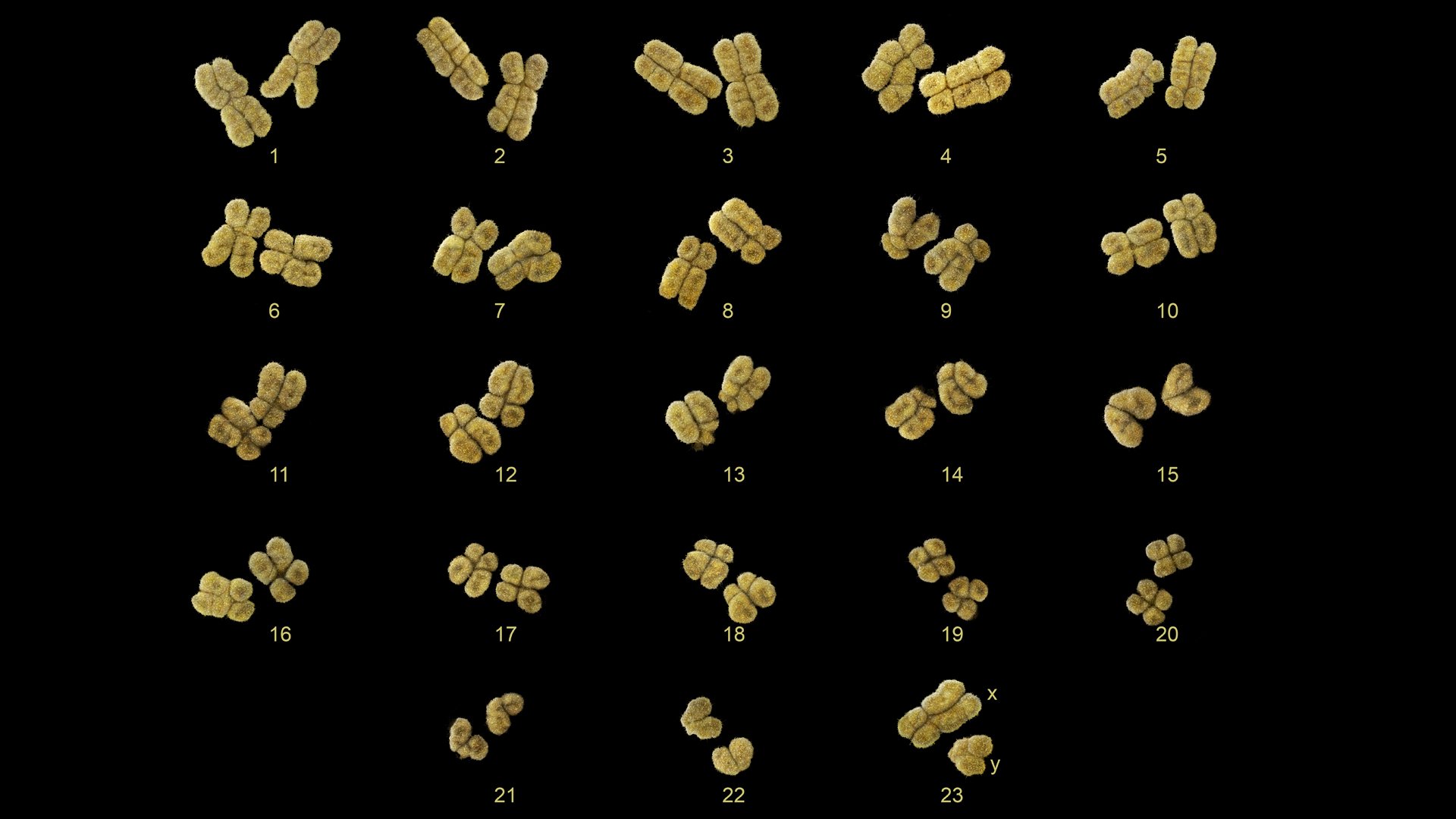A cell’s genetic material consists of very long strings of DNA. These strings are neatly rolled up in chromosomes to make them easier to manage. The chromosomes in our cells are packed two on two in our cell nuclei.
A cell’s genetic material consists of very long strings of DNA. These strings are neatly rolled up in chromosomes to make them easier to manage. The chromosomes in our cells are packed two on two in our cell nuclei.
Rolled up DNA strings
Chromosome comes from the Greek ‘chroma’ (colour) and ‘soma’ (body). A chromosome comprises a string of DNA rolled around proteins (histones). When cells divide, these DNA strings are rolled up extra tightly. This allows chromosomes to be visible under a microscope after they have been dyed. The number of chromosomes per cell differs depending on the life form. A fruit fly, for instance, has just four pairs. Bacteria mostly have a ring-shaped chromosome that drifts around the cell.
Human chromosomes
A human cell has 23 pairs of chromosomes, so 46 in all. These 46 are the same in every cell. Only the sex cells – ovum and sperm cells – differ. They have just 23 chromosomes each. When ovum and sperm cells merge, the cell created has 46 chromosomes. Half your chromosomes are therefore inherited from your mother and half from your father.

